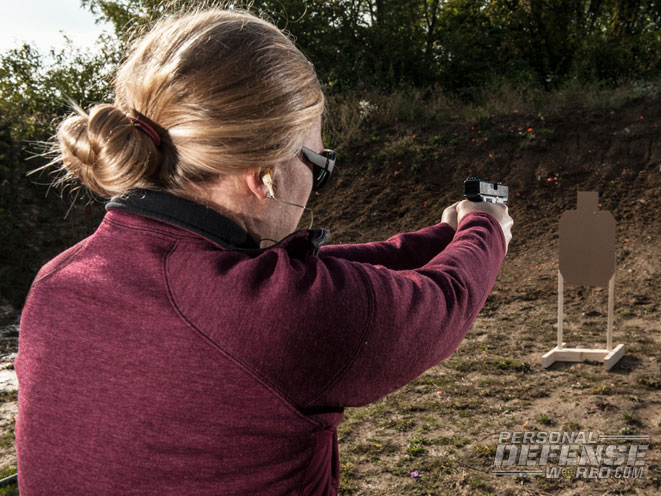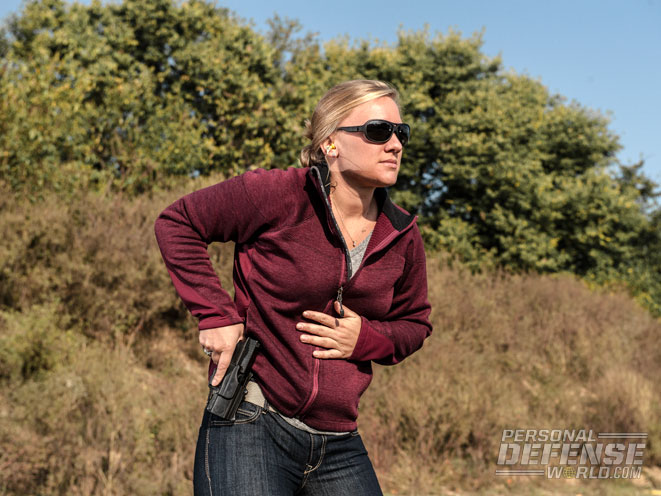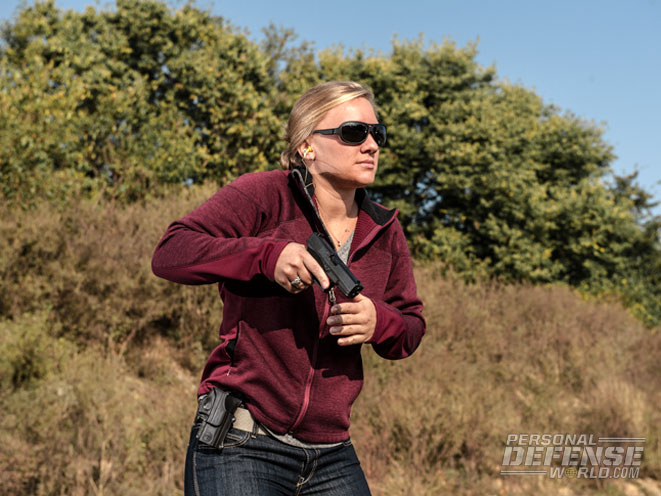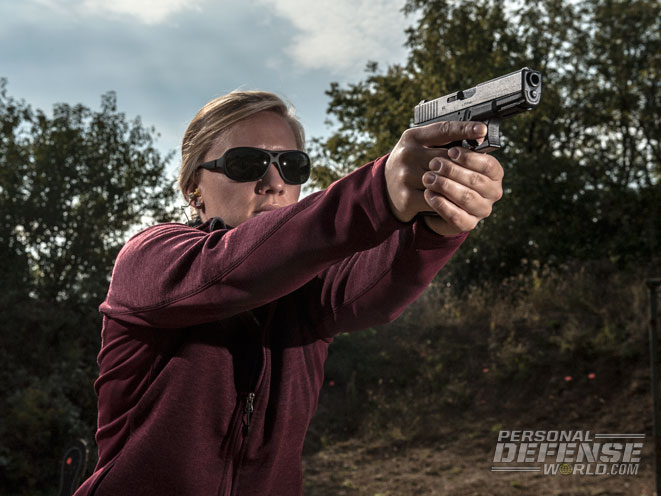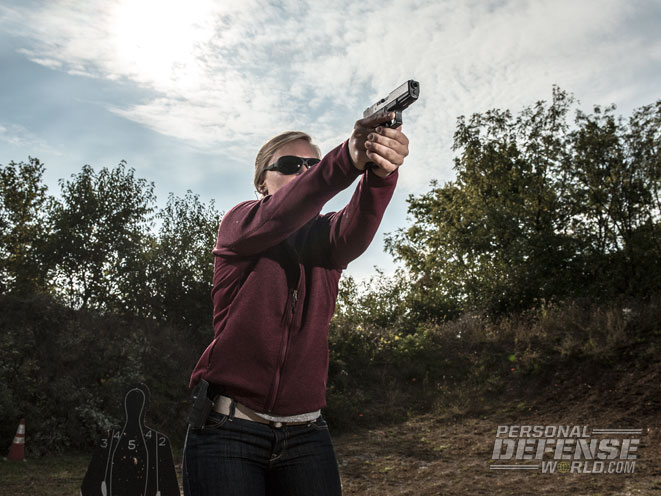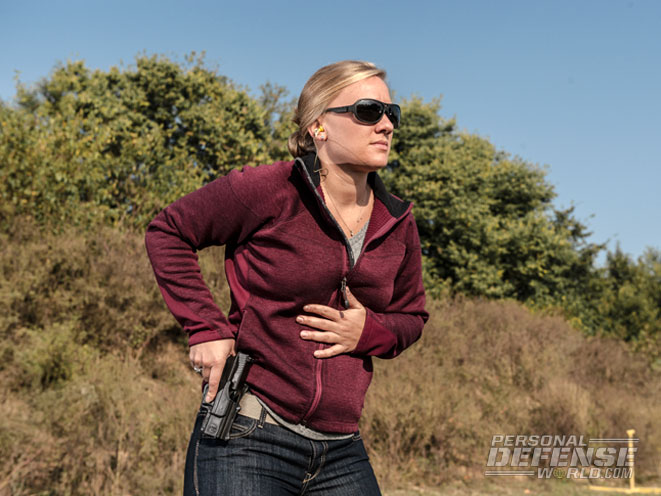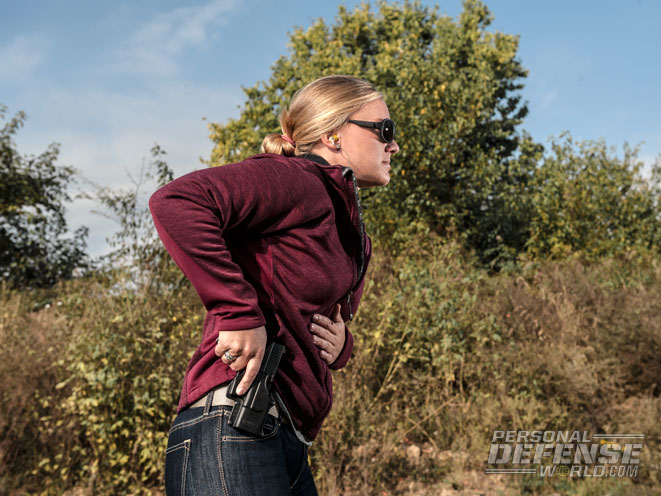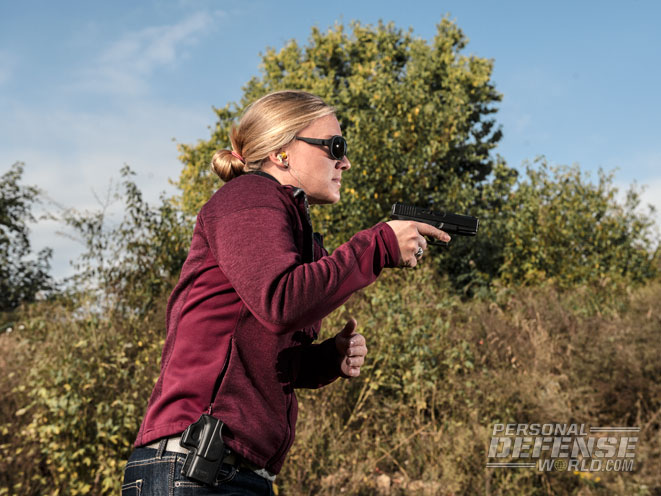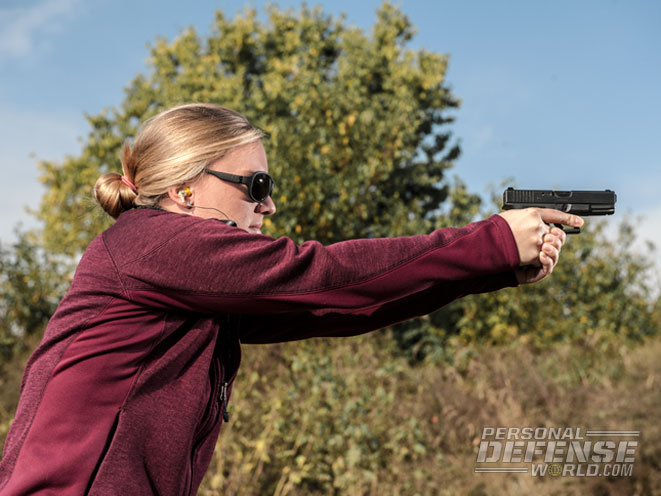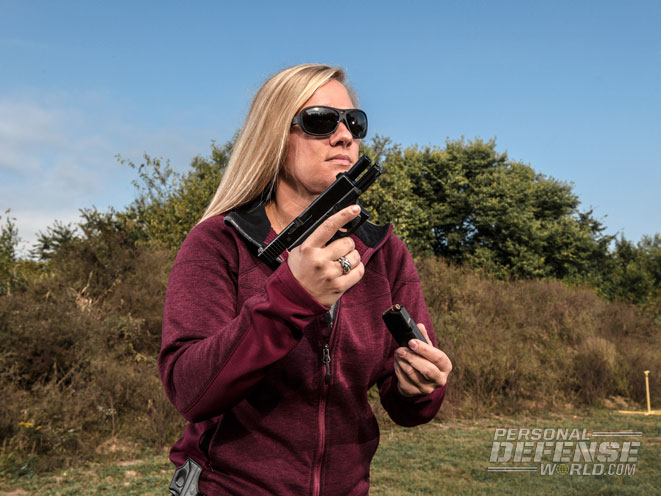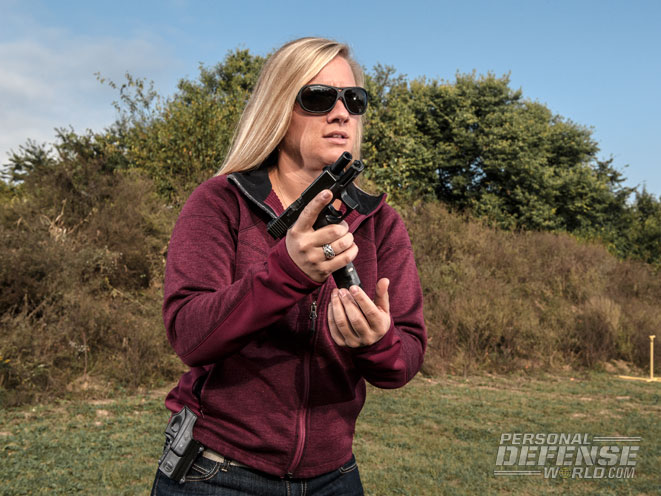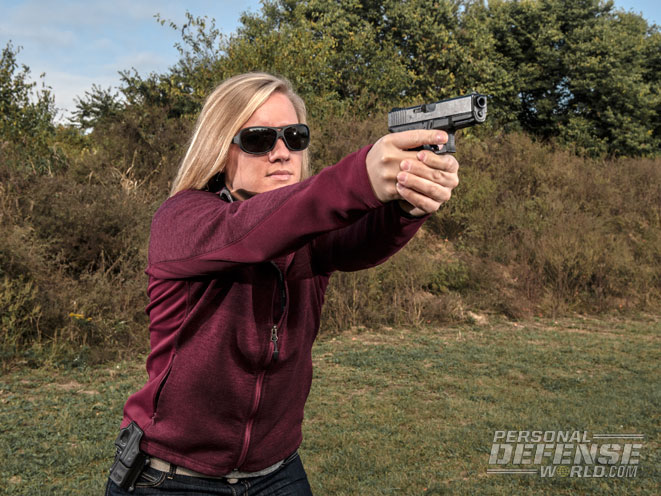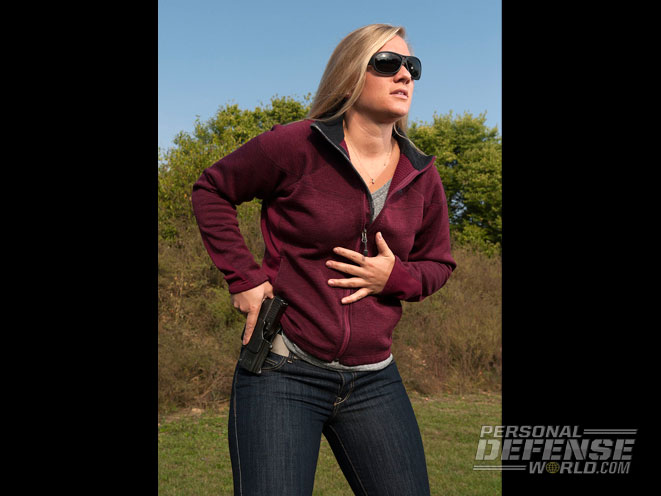Mental training is just that, training. It requires regular, concentrated sessions to be effective. While there are a number of mental training techniques, the one I find most useful is visualization.
Visualization is imagining yourself performing a skill perfectly. It can be any action you want to get better at, whether it’s drawing your pistol, clearing a stage at a match, or hitting dead-center of the 10 ring. It’s easiest to do this in a quiet place that’s free of distractions where you can close your eyes and relax. When you first start mental training, keep your sessions short; five minutes max. When you feel yourself start to get mentally tired, or you can’t keep your focus, stop. If your imagery is sloppy, it will show up on the range.
The key is to make the image as realistic as possible. It’s easier to get the most detail into your imagery if you break it down into component steps. Start by picturing your arms and pistol stretched out before you as you see them while shooting. Make sure you’re imagining yourself in the ideal shooting stance, with a perfect grip and sight alignment.
Advertisement — Continue Reading Below
When you can easily bring up that image, add the movement of firing one shot. Imagine the feel of your trigger as you squeeze it, the sound of the shot going off, how your arms and pistol move with the recoil before settling back into a solid shooting position. The more you work at visualization, the easier it becomes to create and add detail to your image.
RELATED: Dry-Fire Practice – The Key to Improving Your Shooting Skills
Focus on putting details into the actions you perform—drawing and presenting the gun, moving forward and laterally, or performing a reload. Don’t worry about adding details about the range or weather conditions. You can’t control those factors, so you don’t want to mentally train only picturing sunny skies and then show up for a match with rain and wind.
Advertisement — Continue Reading Below
You can work on visualization any time during the day, but it’s especially useful right before a dry-fire or range-fire practice. While at the Olympic Training Center, practice would start with a couple minutes of mental training to get focused, then dry fire to warm up before I ever fired a live round.
How can imagining an activity make you better at performing that activity? Humans learn best by experience, and the brain stores vivid, repeated images as memory. When confronted with a new activity, the brain searches the memory bank for a similar action to pattern its next move after.
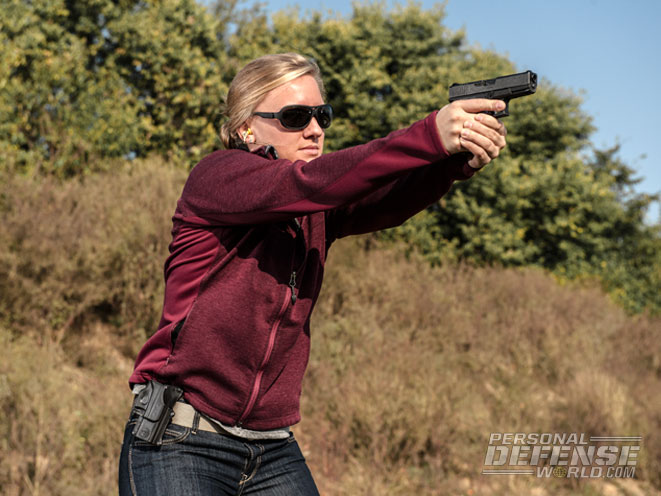
When you’re confident in your visualization skills, work on visualization and dry firing at the same time. With your eyes closed, imagine yourself drawing and presenting from your holster as you physically perform the motion. Tying your mental training to activity reinforces both actions, increasing your physical ability to quickly and smoothly perform the motion until it is second nature.
Advertisement — Continue Reading Below
Start with just a draw and presentation, and then check your sight alignment. If it’s off, correct it. Re-holster and repeat. Continue training on that action until the perfect draw, grip and sight alignment that you imagine is what you are actually doing. Once that skill is perfected, add dry firing one shot with your eyes closed. Again, the key is to repeat that training until you are imagining a perfect shot and follow through, and then actually performing it. If your visualization starts to get vague, shorten your training session, or go back to the previous skill you were practicing and rework that.
Mental training doesn’t just improve your scores in a match—the benefits can help save your life in a critical incident. Mental training increases your confidence and fortitude, both of which you’ll need in a life-or-death fight. There’s no way to know what an incident will look like or where it will take place, but you can still visualize for it by asking, “What now?” As you go about your daily life, periodically stop and ask yourself, “Someone just threatened me. What now?” Then figure out your response plan step by step. Where will you find cover? Where are the exits? Is it better to fight back or retreat? Are there other people you need to protect or avoid?
RELATED: 3 Range Drills for Developing Accuracy, Speed & the Ability to Shoot Under Pressure
Advertisement — Continue Reading Below
Asking yourself these types of questions will increase your situational awareness, especially in the places we tend to be fairly oblivious to our surroundings, like at the local coffee shop or gas station. This type of training will also get you to evaluate your behavior. I used to carry my handgun in my backpack, but I soon realized I couldn’t access it quickly. So I got a holster and started carrying on my person. There are still some situations when I have my gun in my bag, but I make sure that it is positioned so I can get to it in a hurry.
The increased confidence and situational awareness you’ll obtain from mental training may help you avoid a critical incident because you’ll look less like an easy target. But if an incident does occur, you have already decided what to do. Most importantly, visualization will strengthen your mental toughness, which will give you the courage and determination to keep fighting.
Visualization is a skill that can help improve your shooting skills faster than live-fire training alone. It will increase your scores on the competition range and make you a better armed citizen, one more prepared to handle whatever comes your way. Implementing visualization into your training regimen will make your trips to the range more effective.
Advertisement — Continue Reading Below
